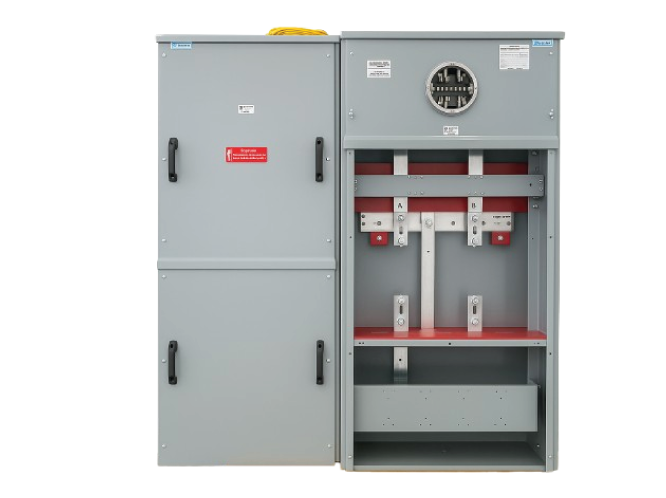In the modern industrial world, downtime is no longer an acceptable risk — it’s an expensive liability. Every minute a production line stands still can cost thousands in lost output, labor inefficiency, and missed deadlines. As industries push toward smarter, data-driven operations, predictive monitoring has emerged as the preferred method for maintaining system reliability and operational efficiency.
Rather than reacting to failures or relying on scheduled maintenance, companies now use predictive monitoring systems to anticipate issues before they occur. By analyzing real-time data from sensors, control systems, and connected equipment such as a Motor Control Center, these systems can detect early signs of wear, imbalance, or inefficiency — transforming maintenance from a reactive task into a proactive strategy.
The Shift from Reactive to Predictive
Traditionally, maintenance followed one of two models — reactive (fix it when it breaks) or preventive (maintain it on a fixed schedule). Both approaches have limitations: reactive maintenance causes unplanned downtime, while preventive maintenance can waste resources by servicing components that are still in good condition.
Predictive monitoring changes that equation. It uses condition-based insights to determine exactly when equipment requires attention. With technologies such as vibration analysis, thermal imaging, electrical current monitoring, and data logging, engineers can monitor the real-time “health” of motors, drives, and switchgear.
This shift allows companies to reduce maintenance costs, extend equipment lifespan, and improve overall reliability — key benefits driving its adoption across manufacturing, energy, and process industries.
How Predictive Monitoring Works
At its core, predictive monitoring combines IoT (Internet of Things) devices, data analytics, and machine learning. Sensors installed on electrical panels, motors, and control systems continuously collect data about temperature, current, vibration, and other operational parameters.
That data is sent to a centralized system or cloud platform, where algorithms analyze it for patterns that indicate potential problems — such as overheating, voltage imbalance, or declining performance. When the system detects abnormal behavior, it triggers an alert long before a failure occurs.
Modern industrial control systems often integrate predictive tools directly within SCADA (Supervisory Control and Data Acquisition) platforms, allowing operators to view live health indicators and trend graphs from the same interface used to control equipment.
The result is a maintenance environment where decisions are based on facts, not assumptions.
Benefits of Riving Industry Adoption
The rise of predictive monitoring isn’t just about convenience — it’s about measurable ROI. Here’s why it’s becoming the industry standard across power, manufacturing, and critical infrastructure sectors:
1. Reduced Downtime
Predictive systems detect potential failures early, giving maintenance teams time to plan interventions without disrupting production. This reduces both emergency repairs and unplanned shutdowns — two of the most costly events in any industrial operation.
2. Optimized Maintenance Scheduling
Instead of following rigid maintenance calendars, companies can prioritize work based on actual equipment condition. This means fewer unnecessary service intervals, lower parts costs, and a more efficient use of skilled labor.
3. Extended Equipment Life
Consistent monitoring helps identify minor issues — such as motor misalignment or bearing wear — before they escalate. Timely corrections can add years to the lifespan of expensive assets like MCCs, drives, and switchgear assemblies.
4. Improved Energy Efficiency
When equipment runs outside optimal conditions, it consumes more power. Predictive monitoring helps maintain efficiency by keeping systems operating within design parameters, directly lowering energy costs.
5. Enhanced Safety and Compliance
Early detection of faults reduces the risk of electrical fires, overloads, or unsafe operating conditions. For industries governed by strict safety regulations, predictive data also supports compliance documentation and audit readiness.
Integration with Modern Power and Control Systems
Predictive monitoring is now being embedded into industrial power and control solutions. For example, advanced Motor Control Centers (MCCs) and custom switchgear are increasingly delivered with built-in sensors and communication interfaces.
These systems collect live operational data, which is transmitted to control rooms or cloud platforms for analysis. When combined with programmable logic controllers (PLCs) and SCADA systems, predictive tools enable operators to see the complete health profile of their electrical infrastructure — from main distribution panels to individual drives.
This integration not only improves maintenance response but also strengthens the entire plant’s digital ecosystem. It aligns perfectly with Industry 4.0 initiatives, where connected devices share data to improve decision-making across production, maintenance, and energy management.
Industries Leading the Adoption
Predictive monitoring is rapidly spreading across sectors that depend on continuous uptime and complex electrical systems, including:
- Oil & Gas: Monitoring compressors, pumps, and MCC systems to prevent costly production halts.
- Power Generation: Ensuring reliability of generators, transformers, and switchgear components.
- Manufacturing: Managing thousands of motors and conveyors through centralized condition dashboards.
- Data Centers: Protecting mission-critical electrical systems from heat or voltage instability.
- Renewable Energy: Tracking turbine and solar inverter performance to maintain output efficiency.
These industries have discovered that predictive maintenance doesn’t just reduce failures — it transforms maintenance into a strategic advantage.
The Business Case for Predictive Monitoring
According to industry research, predictive maintenance can reduce downtime by up to 50% and maintenance costs by 30–40%. The long-term return often far exceeds the initial investment in sensors and analytics platforms.
For companies managing large electrical infrastructures, predictive systems also provide valuable operational data for future upgrades and expansions. Trends in voltage, current, and load behavior can guide decisions on equipment sizing, redundancy, and system design — turning maintenance insights into engineering intelligence.
The Future: From Predictive to Prescriptive
As technology advances, predictive monitoring is evolving toward prescriptive maintenance — where systems not only detect issues but also recommend corrective actions automatically. Using AI models trained on historical data, these platforms will eventually suggest repair methods, parts, and scheduling, further reducing human error and response time.
In the near future, the combination of AI, IoT, and digital twin modeling will allow industries to simulate system performance and anticipate potential failures before they happen in the real world. That level of foresight will redefine reliability standards across every industrial sector.
Conclusion
Predictive monitoring is no longer a futuristic concept — it’s the new foundation of modern maintenance. By merging advanced sensors, analytics, and real-time monitoring across critical systems such as low voltage switchgears, industries can stay ahead of failures, extend asset life, and maintain maximum operational uptime.
As more companies move toward automation and data-driven decision-making, predictive monitoring will continue to evolve from an efficiency tool into a strategic necessity. The industries that adopt it today are setting the benchmark for reliability, safety, and performance tomorrow.








